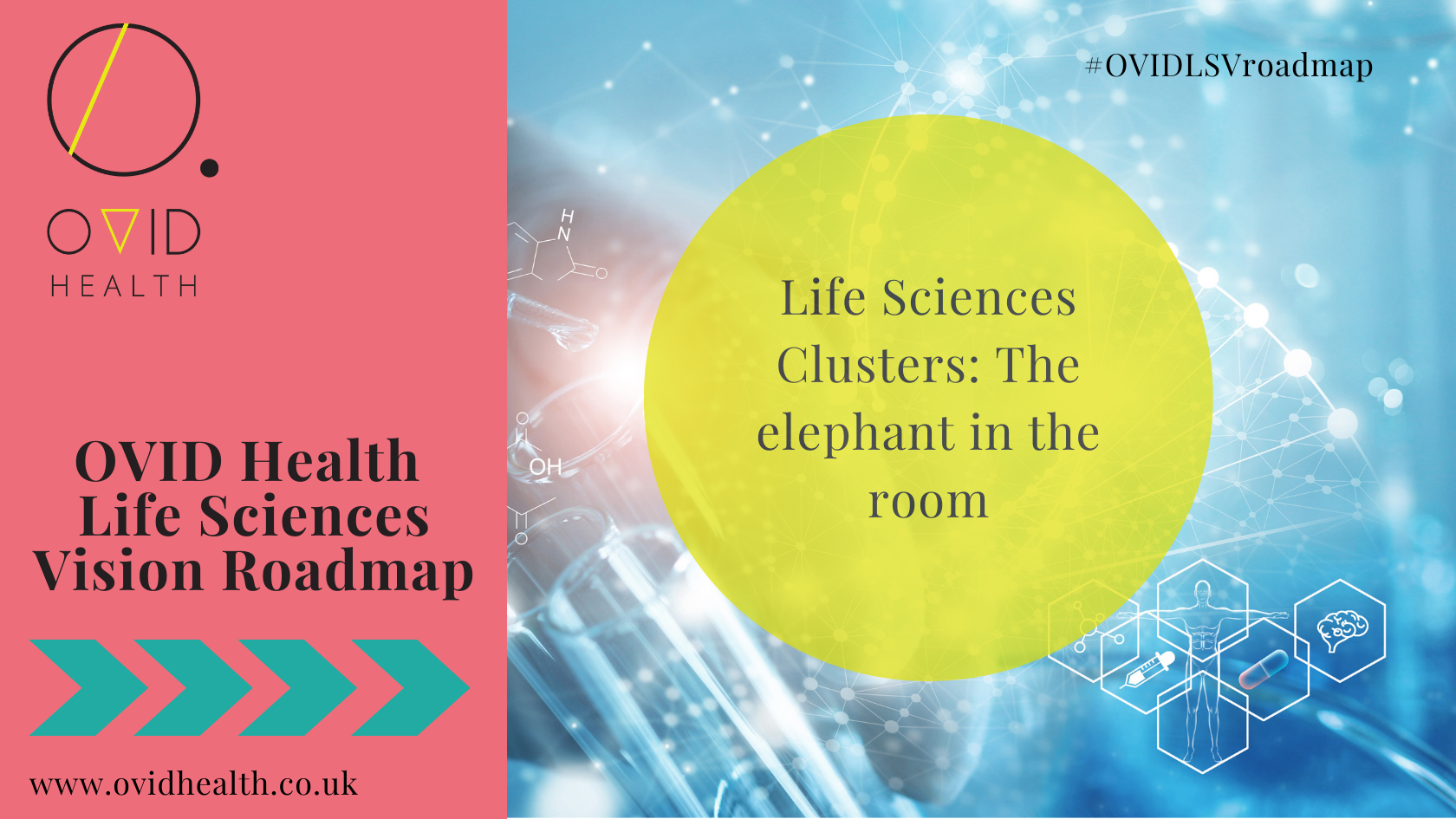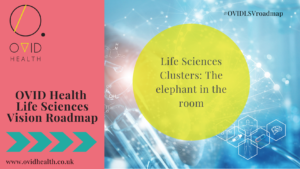
14 Jul Life Sciences Clusters: The elephant in the room

July 14th was the timetabled release date for the Life Sciences Vision Roadmap – the delivery plan was due to set out funded activity for this spending review cycle to deliver on the Life Sciences Vision’s “great healthcare challenges”. Political circumstances have shelved the policy document but not the challenges it seeks to address. OVID Health Senior Account Manager, Jack Fleming, shares his analysis of what the Roadmap needed to contain on clusters.
At the heart of the Life Sciences Vision are the “great healthcare challenges”. These challenges are profound, and other blogs in this series lay out some of the steps needed to solve them. But inevitably, as new solutions are found to these existing problems, so too will new problems arise.
The UK Government has a clear desire to be a world leading science superpower and global life sciences leader. To meet this ambition, the Life Sciences Vision rightly focuses on creating an “outstanding environment” for life sciences, through access to finance, regulation, skills, manufacturing and trade and investment. These are, of course, all important. But one thing is starkly notable by its absence: clustering.
Strength in numbers, strength in places
Clustering is a well-established success model for innovation intense sectors, akin to how the concentration of skills and economies of scale within cities boost productivity beyond the sum of their parts. By bringing together the latest ideas, vital infrastructure, highly skilled individuals, potential collaborators and investors, cutting edge industries can be supercharged to deliver real success.
The UK already has a number of successful clusters and superclusters in life sciences, in places like Stevenage, Oxford, Cambridge, and of course, London. Outside the “Golden Triangle”, the Government’s Levelling Up White Paper identified at least eight health, life sciences and MedTech clusters.
In the UK life sciences eco-system, these clusters bring together the different and at times disparate players – academia, spin-outs, industry large and small, public bodies, funders and regulators, life sciences developers and of course investors. Cluster organisations take these groupings to the next level, enabling all partners – but particularly innovative start-ups, spin-outs and SMEs – to realise the full benefits of being located within a cluster.
The elephant (is not) in the room
The Vision’s lack of a detailed clusters policy which recognises the role of cluster organisations is therefore “the elephant in room”. Clusters can be integral to creating and sustaining an outstanding innovation environment for life sciences. They can deliver high-skilled, high wage economies, greater than the sum of their parts. They can be a vehicle for “levelling up”, attracting investment across the UK. And if clusters provide strength, then cluster organisations provide direction, serving as convenors, coordinators and collective voices for the clusters they represent.
The Government’s failure to fully recognise and support clusters and cluster organisations is a missed opportunity. Without deep support for industry to create thriving clusters, Government efforts to “level up” and secure the UK’s place as a science super-power will be an uphill struggle. It would be so much easier if only they could ride the elephant.
To find out more about OVID’s take on the Life Sciences Vision healthcare challenges and how to deliver them, check out our series here.